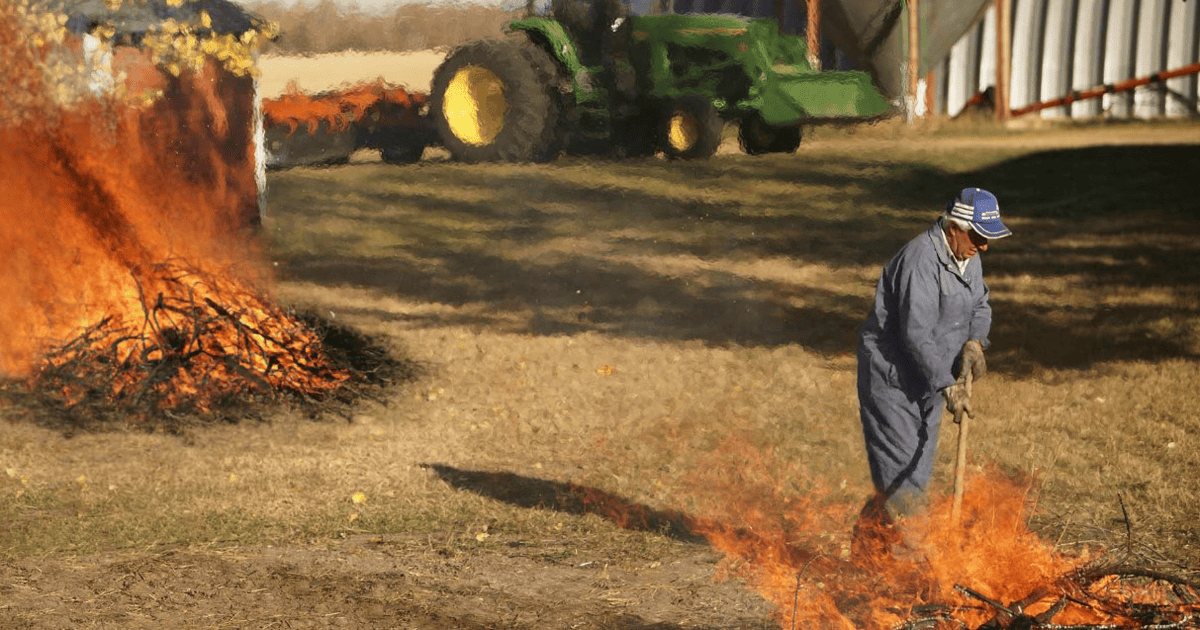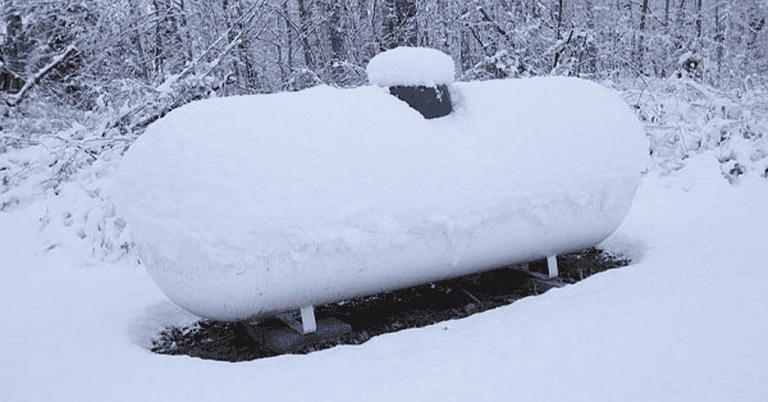How Windy is Too Windy for a Fire
Do you enjoy gathering around a cozy fire on a windy evening? While the crackling flames and warmth can be inviting, it’s essential to consider the risks involved. Wind and fire are not best friends, as gusts can quickly turn a controlled blaze into an uncontrollable inferno.
So, how windy is too windy for a fire? The answer lies in understanding the dynamics between wind speed and fire behavior. When wind speeds exceed 5 MPH, starting a fire becomes increasingly hazardous. Think about it – if trees nearby are swaying vigorously, that’s nature’s way of saying, ‘Hold off on that campfire!’
To ensure your safety, it’s crucial to be informed about proper precautions when building fires in these conditions. This article will provide data-driven insights and technical guidance on safely navigating the complexities of having a fire in windy conditions.
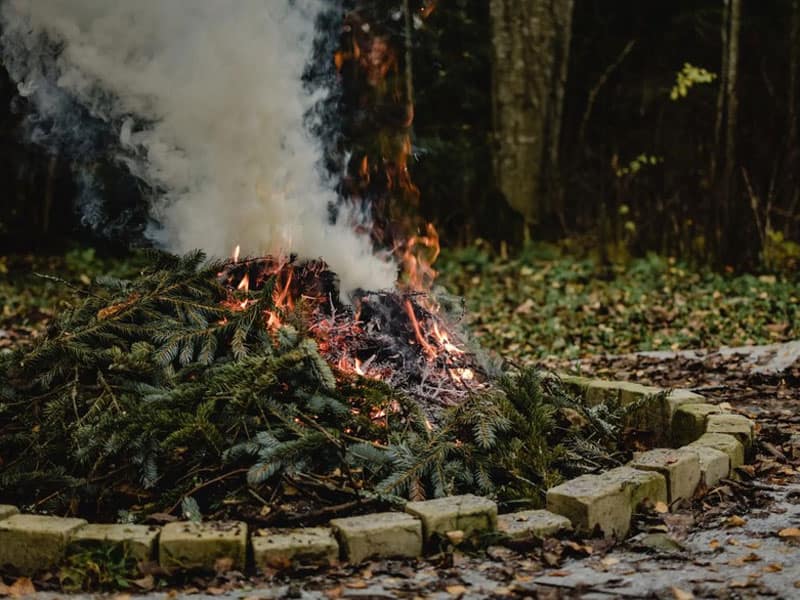
Can I Have a Fire When It’s Windy?
When considering whether to have a fire in windy conditions, it is essential to understand what wind speeds are considered safe. Windy conditions that exceed five mph are generally considered too windy to have a fire due to the increased risk of fire spread and unpredictable fire behavior.
To minimize the effects of wind on your fire, it may be necessary to block the wind using natural or artificial windbreaks. (Learn How Long Do Air Fryers Last)
What are the Windy Conditions Considered Safe for Having a Fire?
Although windy conditions can vary, it’s generally considered unsafe to have a fire when wind speeds exceed 5 MPH. Wind speeds more significant than this can significantly increase the risk of fire spreading and becoming uncontrollable. The strong gusts can cause embers to fly long distances and ignite new fires or reignite old ones. Fire pits in windy conditions should be avoided to prevent accidents and the potential for larger fires.
It’s essential to prioritize safety when considering having a fire in a fire pit.
How is Windy Too Windy to Have a Fire?
Please stay safe and avoid risking a potential disaster by understanding the dangers of strong winds when enjoying a cozy campfire. When the wind is blowing at more than 40 mph, it is too windy to have a fire. Winds exceeding this speed can cause ashes to rise and fires to spread uncontrollably.
Finding a location to shield your fire from solid winds or building a wind wall with rocks or logs is crucial if no natural shelter is available.
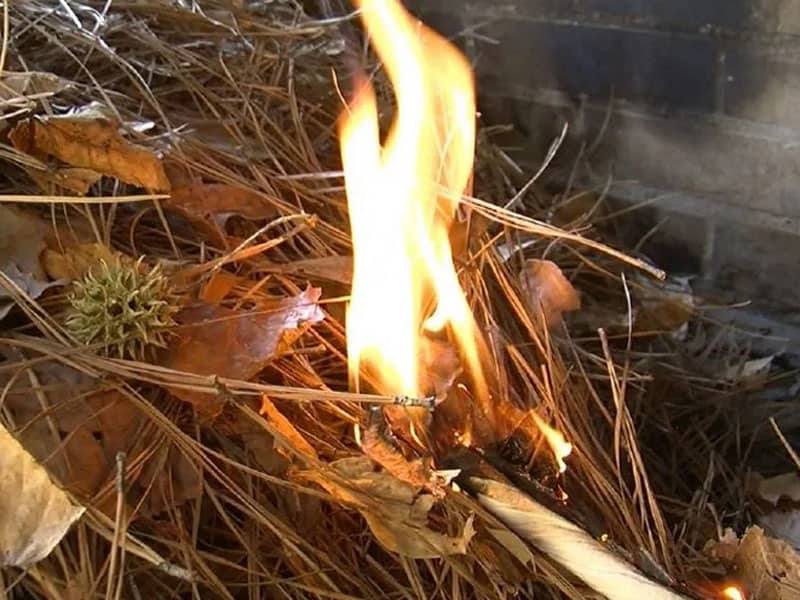
Should I Start a Fire When It’s Windy?
Take a moment to consider the potential risks and make a responsible choice before lighting that match. When starting a fire in windy conditions, it is crucial to prioritize safety. Set up your fire pit away from flammable objects and pay close attention to wind speed. Backyard fire pit safety is essential, especially when the wind is blowing. Taking these precautions allows you to enjoy your campfire while minimizing the risk of accidents.
| Wind Speed | Fire Safety Level |
|---|---|
| 0-5 mph | Safe |
| 6-10 mph | Caution |
| Above ten mph | High Risk |
What Wind Speed is Unsafe for Having a Fire?
Beware, when the wind starts to howl like a wild animal, it’s time to reconsider lighting that matches your campfire. Windy conditions can turn a peaceful fire into a dangerous inferno. The impact of wind on the fire cannot be underestimated.
Once the wind speed exceeds 5 MPH, it becomes unsafe to have a fire. At this point, the risk of uncontrollable fire spread increases exponentially. Prioritize safety and extinguish the fire before it’s too late. (Read Can You Put Space Heater On Carpet)
Do I Need to Block the Wind to Have a Fire in Windy Conditions?
Now that you understand what wind speed is unsafe for having a fire let’s talk about whether you need to block the wind to have a fire in windy conditions. The answer is yes; blocking the wind during a fire in windy conditions is crucial. Here are three essential fire pit safety tips to consider:
- Create a Windbreak: Build a barrier using rocks, logs, or your backpack to shield the fire from solid winds.
- Choose Sheltered Location: Find a spot that offers natural protection from the wind, such as rocky outcroppings or trees.
- Dig a Pit: Digging a hole can help prevent quick fire spread and increase heat concentration while minimizing the impact of gusty winds.
Implementing these measures allows you to enjoy your campfire safely, even in windy conditions.
Can I Use a Fire Pit When It’s Windy?
When considering using a fire pit in windy conditions, it is essential to assess the safety risks. Wind can easily cause a fire to spread and become uncontrollable, so it is generally unsafe to use a fire pit when it’s windy.
A wind speed of 5 mph or greater is considered too windy for a fire pit, as it can cause the flame to flicker and the fire to become unstable. To keep the fire pit flame steady in windy conditions, you can use wind guards or screens around the fire pit, which can help block out strong wind gusts.
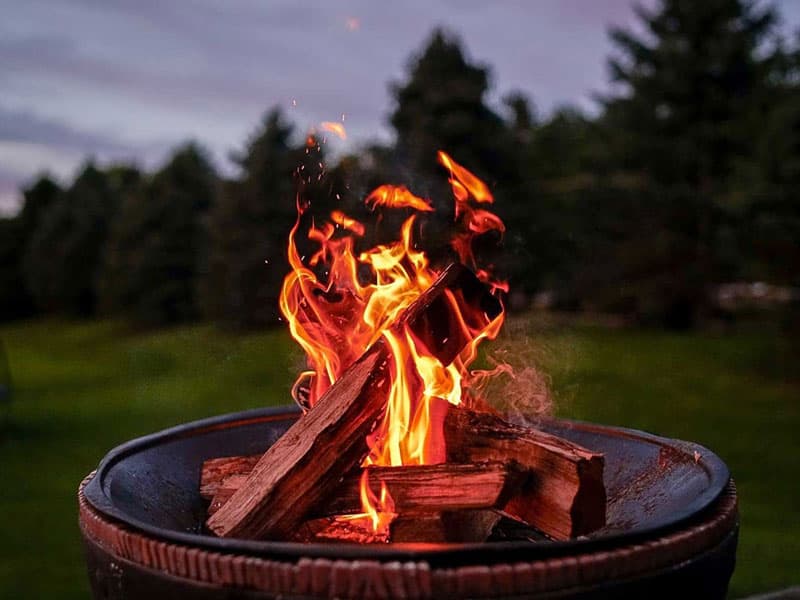
Is It Safe to Use a Fire Pit in Windy Conditions?
Using a fire pit in windy conditions can be risky. The wind can quickly fan the flames and cause the fire to spread uncontrollably. It is essential to consider how windy it is before using a fire pit. While no specific threshold exists for when it becomes unsafe, avoiding using a fire pit is generally recommended if the wind speed exceeds 5 MPH. This helps minimize the risk of the fire getting out of control and causing damage or injury. (Read Overfill Propane Tank)
What Wind Speed is Considered Too Windy for a Fire Pit?
A fire pit becomes a dangerous beast in gusts of strong wind, ready to unleash destruction and chaos. When it comes to wind speed, there is a threshold where it becomes too windy for a fire pit. Here are three key factors to consider when determining if the wind speed is too high:
- Wind Speed Limit: A general rule of thumb is that if the wind speed exceeds ten mph, it is considered too windy for a fire pit. At this point, the risk of embers being carried away and starting new fires increases significantly.
- Fire Pit Design: The design of the fire pit itself can also affect how susceptible it is to windy conditions. Look for fire pits with features such as screens or covers that can help protect against embers being blown around.
- Location and Shelter: The site of your fire pit can play a role in determining if it’s too windy. Choose an area that provides natural shelter from wind, such as near buildings or trees, or create your windbreak using rocks or logs.
Safety should always be the top priority when using a fire pit in windy conditions. Monitor the wind speed and adjust accordingly to ensure a safe and enjoyable experience.
How Can I Keep the Fire Pit Flame Steady in Windy Conditions?
To maintain a steady flame in gusty conditions, it’s essential to employ effective strategies that ensure the safety and enjoyment of your fire pit experience. Here are some techniques you can use:
| Strategies | Benefits |
|---|---|
| Build a windbreak | Shields the fire from solid winds |
| Use a spark screen | It prevents sparks from being blown away |
| Position the fire pit | Please place it in a location sheltered from the wind |
| Adjust fuel placement | Stack logs in a way that blocks wind while allowing airflow |
| Monitor and adjust flames | Keep an eye on the fire and adapt as needed to combat gusts of wind |
By implementing these measures, you can help maintain a steady love even in windy conditions, ensuring your fire pit experience remains enjoyable and safe.
Should I Use a Fire Pit When It’s Windy?
When using a fire pit in windy conditions, it’s essential to consider how windy is too windy for a fire. While the answer may vary depending on the specific circumstances, some general guidelines exist.
Here are some factors to consider when deciding whether or not to use a fire pit when it’s windy:
- Wind speed: Pay attention to the wind speed and gusts. High wind speeds can make it difficult to control the flames and increase the risk of embers spreading.
- Wind direction: Consider the direction of the wind. If the wind is blowing toward flammable materials or structures, avoiding using a fire pit may be best.
- Fire safety measures: Evaluate your ability to implement necessary safety measures, such as having water nearby and ensuring that sparks or embers won’t be risky.
Remember safety should always be your top priority when using a fire pit, so use your judgment and take precautions based on the current wind conditions.
What Measures Should I Take to Use a Fire Pit Safely in Windy Conditions?
Be prepared and take precautions for a safe fire pit experience in gusty conditions. Using a fire pit can be risky in windy conditions, but with the proper measures, you can still enjoy your fire safely.
First, choose a location sheltered from the wind to minimize the risk of embers spreading.
Second, create a windbreak using rocks or logs to protect your fire from strong gusts.
Finally, always have a water source nearby to extinguish the fire if needed.
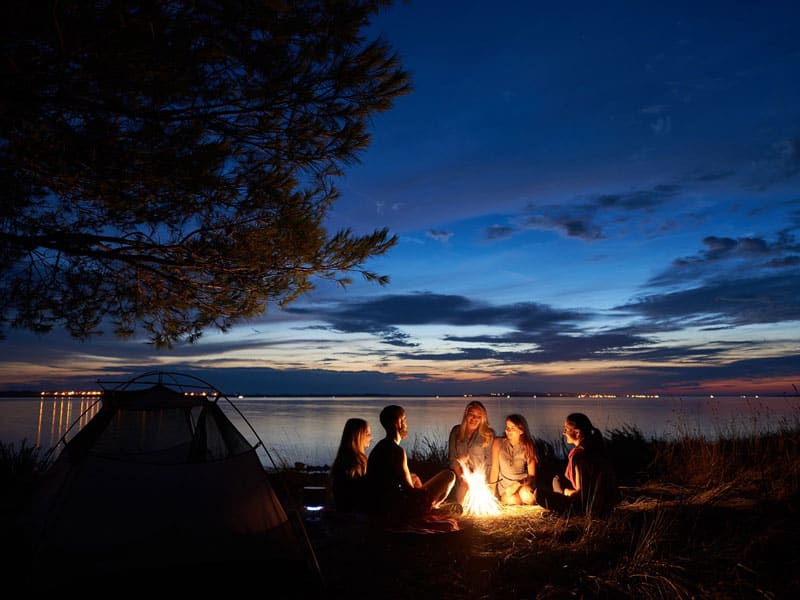
Can I Start a Campfire When It’s Windy?
Is it safe to start a campfire in windy conditions? The safety of starting a campfire in windy conditions depends on wind speed and other factors. Wind speeds exceeding 5 MPH can increase the risk of an uncontrolled fire, so it is generally recommended to avoid starting a campfire when it’s too windy. However, if you still decide to start a campfire in windy conditions, precautions such as building wind walls and having water nearby should be taken to minimize the risks.
Is It Safe to Start a Campfire in Windy Conditions?
Despite the potential dangers and risks associated with having a fire in windy conditions, it’s essential to understand that wind can quickly spread and fuel the fire, making it extremely dangerous. To determine how windy is too windy for a campfire, consider the following factors:
| Wind Speed | Fire Safety |
|---|---|
| Less than 5 MPH | Generally safe to start a fire |
| 5-10 MPH | Increased risk of fire spreading |
| 10-20 MPH | High risk of fire spreading uncontrollably |
| 20-40 MPH | Extremely dangerous; avoid starting a fire |
| Greater than 40 MPH | Too windy for a campfire |
It is crucial to prioritize safety and use this table when deciding whether it is safe to start a campfire in windy conditions.
How is Windy Too Windy for Starting a Campfire?
When starting a campfire, it’s essential to consider how windy it is. Wind can significantly impact the safety of a fire, and knowing when it’s too windy can prevent potential dangers. Here are five key factors to consider:
- Wind can cause a fire to spread rapidly. When the wind is strong, it can quickly carry flames and embers, making it difficult to control the fire’s direction and increasing the risk of it spreading uncontrollably.
- Wind can make it difficult to control the direction of the fire. Strong gusts can cause the flames to change direction unexpectedly, posing a danger to nearby structures or vegetation.
- Wind can blow embers and sparks, increasing the risk of igniting surrounding materials. If the wind is strong enough, it can carry burning debris to nearby dry grass, leaves, or other flammable objects, potentially starting a new fire.
- Wind can dry out the wood, making it more susceptible to catching fire. If the wind is consistently strong, it can accelerate the drying process of the wood, making it easier for the fire to ignite and spread.
- Wind patterns in certain regions contribute to the severity of wildfires. Some areas are prone to strong winds, which can exacerbate the spread and intensity of wildfires. Understanding the wind patterns in your region can help you gauge the risk level for starting a campfire.
Considering these factors, you can decide whether it’s too windy for a safe campfire. It’s always better to err on the side of caution and wait for calmer conditions before starting a fire. (Learn How To Turn Propane Tank On)
What Precautions Should I Take to Start a Campfire in Windy Conditions?
Ensure a safe and enjoyable campfire experience in gusty conditions by taking these precautions. When starting a campfire in windy conditions, it is essential to know how windy it is too windy. Wind speeds exceeding 5 MPH are considered too strong for a safe fire.
To mitigate the risks, find a sheltered spot away from the wind or create a windbreak using logs or rocks. Always have water nearby in case the fire needs to be extinguished quickly.
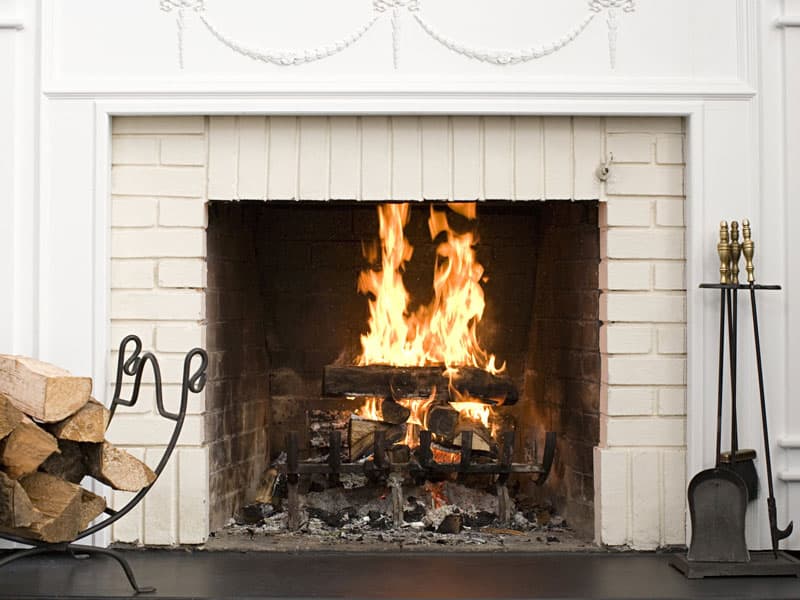
Can I Use a Fireplace When It’s Windy?
Safe and sound, you can still enjoy a cozy evening by the fireplace, even when the wind whistles outside. To ensure your safety, it’s essential to follow these guidelines:
- Keep the fire pit away from any flammable objects or structures.
- Determine if the wind is strong enough to pose a risk by checking for gusts exceeding 20 mph.
- If the wind is too strong, avoid having a fire to prevent accidents and uncontrollable situations.
- Remember that winds exceeding 25 mph can quickly reignite embers and cause fires to spread rapidly.
By adhering to these precautions, you can safely enjoy your fireplace experience while keeping potential dangers at bay.
What Wind Conditions are Safe to Use a Fireplace?
To enjoy the warmth of your fireplace, it’s crucial to assess the surrounding conditions and determine if it’s suitable for a cozy evening indoors. When using a fireplace, wind conditions play a significant role in safety. While no specific wind speed defines how windy is too windy for a fire pit or fireplace, avoiding using it when wind speeds exceed 20 mph is generally recommended. High winds can cause embers to fly out, increase the risk of fire spread, and make it challenging to control the fire.
How to Safely Build a Fire in Windy Conditions?
When building a fire in windy conditions, it’s crucial to consider the wind direction. Position yourself and your fire pit so the wind detracts from flammable objects or structures. Additionally, choose a fire type that is suitable for windy conditions. This includes a low, controlled flame with well-contained fuel.
To block the wind and keep your fire going, create a windbreak using natural elements like rocks or logs. This will help prevent the wind from blowing out your flames and keep them steady. Take precautions to prevent the fire from spreading by clearing the area around your fire pit of any dry vegetation or debris that could easily catch fire.
Knowing that windy conditions can significantly increase the risk of fire accidents is essential. Strong winds can carry embers long distances, potentially igniting new fires. Always have water nearby to extinguish any sparks or embers that may escape, and ensure you have proper safety measures in place when building a fire in these conditions.
Should I Consider the Wind Direction When Building a Fire?
Consider the wind direction when building a fire to ensure it doesn’t unexpectedly spread and become uncontrollable. Wind plays a crucial role in determining the behavior of a fire, so understanding its direction is essential for safety. To help you visualize the importance of wind direction, consider the following table:
| Wind Direction | Fire Behavior |
|---|---|
| Into the wind | Slower burn |
| Parallel to the wind | Faster spread |
| Away from the wind | Decreased risk |
By considering the wind direction, you can decide where to position your fire pit and minimize the risk of accidents or uncontrolled fires.
What Type of Fire is Suitable for Windy Conditions?
Find the correct type of fire that can withstand strong winds and provide warmth and light for your outdoor activities.
Consider building a low, controlled flame in your fire pit when it’s windy to have a fire.
Place the pit away from flammable materials like dry grass or leaves.
Keep the flames small to minimize the effect of wind on the fire.
Adjust the amount of wind by positioning yourself and your fire pit in a sheltered area if possible.
How Can I Block the Wind to Keep the Fire Going?
To keep your fire strong, you can effectively block the wind and maintain a steady fire in a few ways. First, position your fire pit against a natural windbreak, such as trees or large rocks, to shield it from gusts. This will help to create a barrier and prevent the wind from blowing directly onto the fire. Additionally, you can use logs or stacked rocks to further block the wind on the side where it is coming from. This will provide an extra protection layer and help maintain a consistent flame. Another option is to set up a portable windscreen made of metal or heat-resistant material. This can be placed around the fire to create a sheltered area and minimize the impact of the wind. By blocking the wind, you’ll reduce its effect on your fire and ensure it continues to burn steadily.
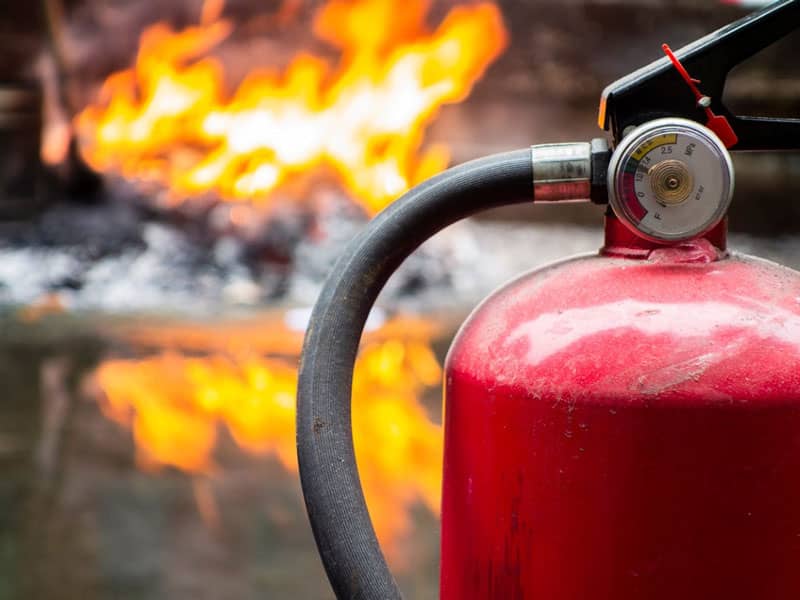
What Precautions Should I Take to Prevent the Fire from Spreading in Windy Conditions?
By implementing proper precautions, you can ensure the fire remains controlled and contained even in windy conditions. When considering how windy is too windy for a fire, it’s essential to take specific measures to prevent the fire from spreading.
Firstly, create a windbreak using rocks or logs to protect the fire.
Secondly, clear any flammable debris around the area.
Lastly, keep a bucket of water nearby to extinguish any embers that may escape quickly.
Can Wind Increase the Risk of Fire Accidents?
Beware; when the fierce gusts dance with flames, they become an unruly partner, increasing the risk of fiery accidents.
- Windy conditions can cause fires to spread more quickly and unpredictably.
- The risk of ember-related incidents is heightened in windy conditions.
- Firefighters find it challenging to control fires in solid winds.
- Dry wood, caused by wind drying out fuel, increases the risk of fire accidents.
Stay vigilant and take necessary precautions to minimize the risks of wind and prevent fire accidents.
Conclusion
In conclusion, it is crucial to prioritize safety and take necessary precautions when having a fire in windy conditions.
Wind can easily take control of a fire, causing it to spread rapidly and uncontrollably. It is recommended to avoid starting a fire if the wind speed exceeds 5 MPH, as the risk of an uncontrolled fire increases exponentially.
One interesting statistic is that according to the National Fire Protection Association (NFPA), 73% of outdoor fires are caused by human activities, highlighting the importance of understanding the risks and responsibly dealing with fires in windy conditions.
Remember to have water nearby and be prepared for unexpected situations. Stay safe!

